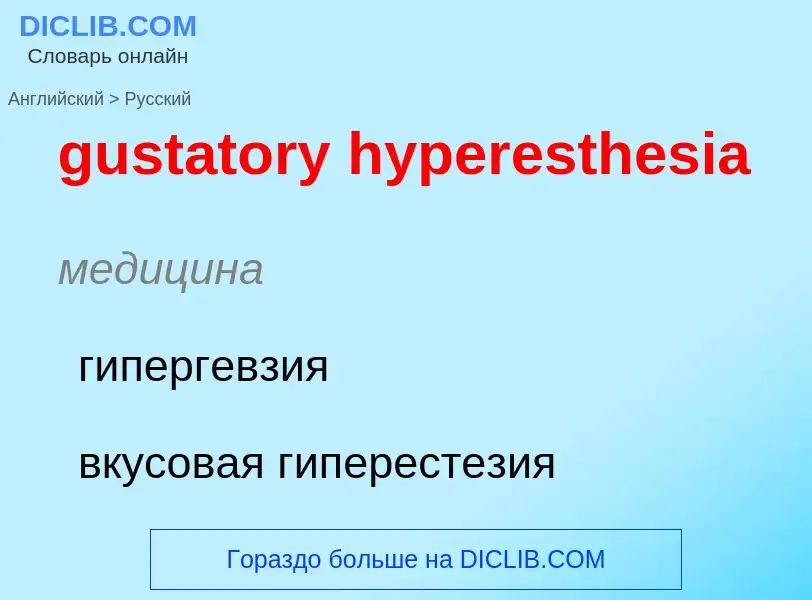Перевод и анализ слов искусственным интеллектом ChatGPT
На этой странице Вы можете получить подробный анализ слова или словосочетания, произведенный с помощью лучшей на сегодняшний день технологии искусственного интеллекта:
- как употребляется слово
- частота употребления
- используется оно чаще в устной или письменной речи
- варианты перевода слова
- примеры употребления (несколько фраз с переводом)
- этимология
gustatory hyperesthesia - перевод на русский
медицина
гипергевзия
вкусовая гиперестезия
вкусовое повышенное ощущение
общая лексика
вкус
['saunis]
общая лексика
кисловатость
существительное
общая лексика
кислота
кислый вкус
химия
кислотность
Определение
Википедия
.jpg?width=120)
First reported in 1980 by J. Tuttle in a scientific article, feline hyperesthesia syndrome, also known as rolling skin disease, is a complex and poorly understood syndrome that can affect domestic cats of any age, breed, and sex. The syndrome may also be referred to as feline hyperaesthesia syndrome, apparent neuritis, atypical neurodermatitis, psychomotor epilepsy, pruritic dermatitis of Siamese, rolling skin syndrome, and twitchy cat disease. The syndrome usually appears in cats after they've reached maturity, with most cases first arising in cats between one and five years old.
The condition is most commonly identified by frantic scratching, biting or grooming of the lumbar area, generally at the base of the tail, and a rippling or rolling of the dorsal (anatomy) lumbar skin. These clinical signs usually appear in a distinct episode, with cats returning to normal afterwards. During these episodes, affected cats can be extremely difficult to distract from their behaviour, and often appear to be absent-minded or in a trance-like state. Overall, the prognosis for the syndrome is good, so long as the syndrome does not result in excessive self-aggression and self-mutilation that may lead to infection.

.jpg?width=200)


